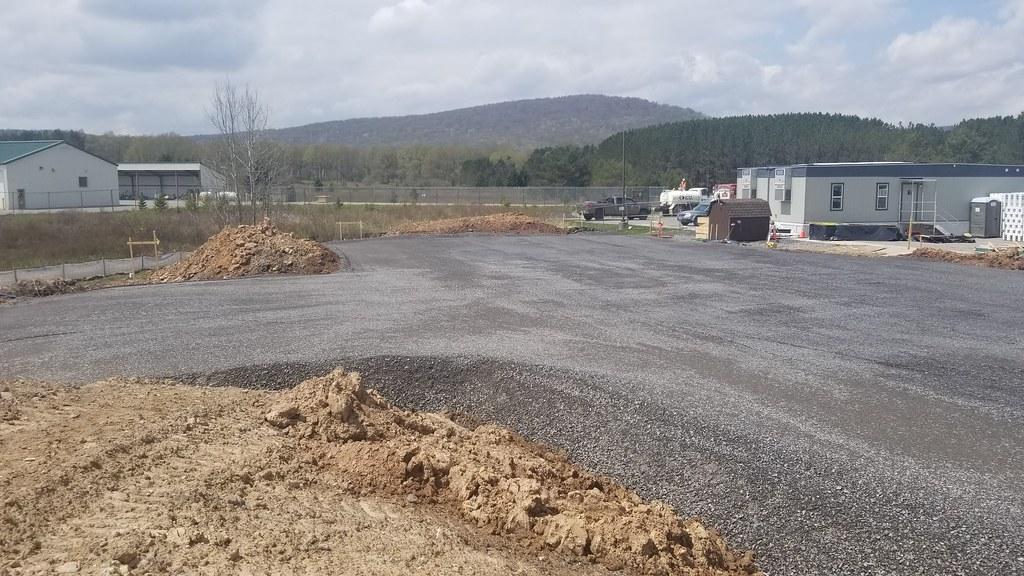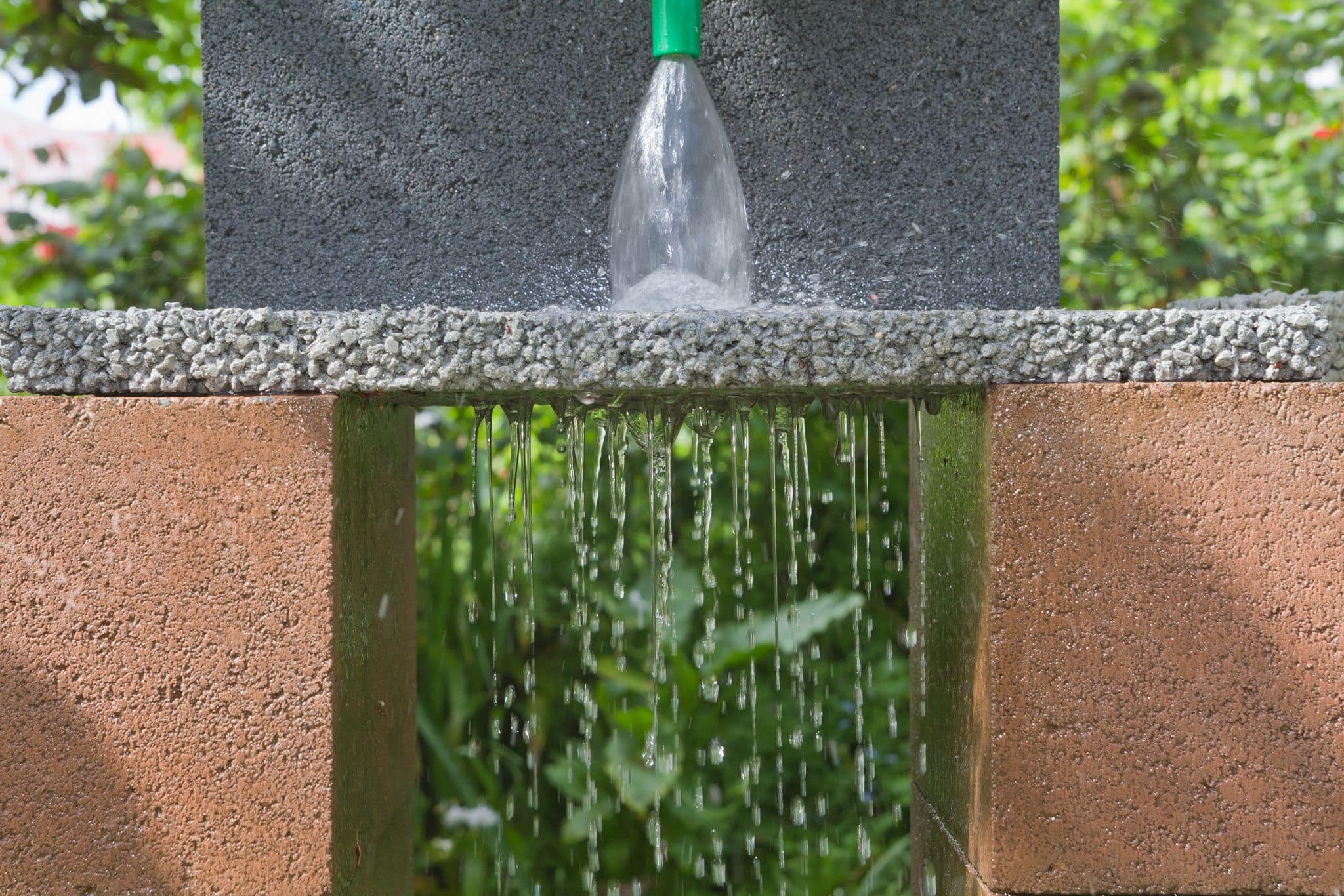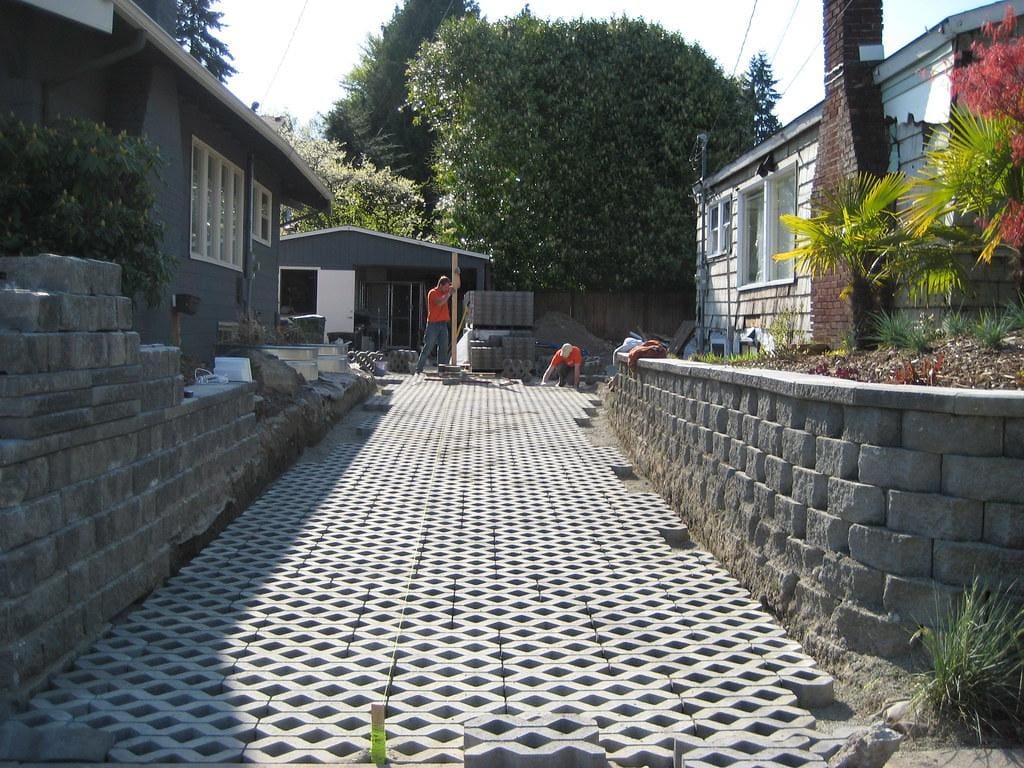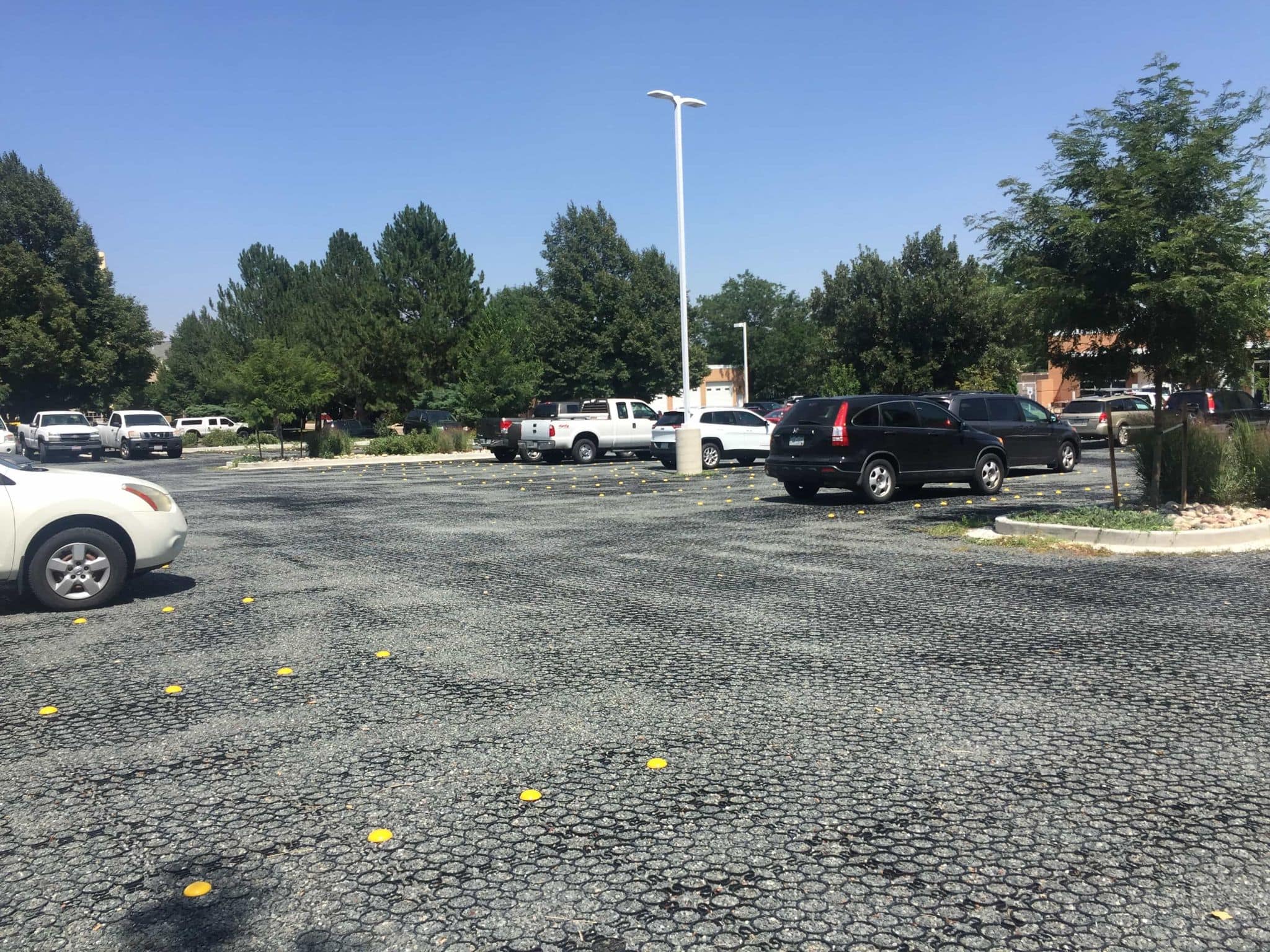Permeable hardscapes have become extremely popular lately. A permeable hardscape has the ability to drain water directly through itself. This means that the drainage system is built into the hardscape, and requires less or even zero extra drainage features to keep the surface from pooling or flooding.
Of course, there is a ton of variety within the permeable hardscape niche. There are many different types of permeable hardscaping and they all have pros and cons. In case you’re interested in implementing some permeable hardscaping, let’s take a look at 4 different types and how they stack up against each other:
1. Loose Gravel
Loose gravel is the cheapest and most basic form of permeable hardscape. You can use a border to keep the gravel in place, but it can work well enough without one. Especially for use in rural driveways or parking lots that don’t get a ton of traffic, gravel does just fine as a permeable hardscaping material that helps prevent flooding and doesn’t require any additional drainage.

Loose gravel is a vastly inferior material for any hardscaping purpose beyond this, however. It easily spreads and thins, requiring frequent raking and the addition of new gravel. It cannot handle high rates of precipitation and because of how easily it spreads, ruts can develop.
Ruts tend to pool with water and become mud puddles, which negates the positive effects of permeability.The gravel becomes compacted and impermeable over time.Loose gravel also turns to dust which requires extra maintenance to prevent it from becoming a problem.
2. Permeable Asphalt/Concrete
Another type of permeable hardscape is permeable asphalt or concrete. Permeable asphalt and concrete both function in the same way, by letting liquid drain through them and into the soil below. They are considered partially permeable, because the way the material is designed only allows it to drain water at a very low rate.
These semi-porous hardscapes can be a solution for eliminating some extra drainage requirements and work as a supplement to other drainage techniques, but permeable asphalt and concrete are not suited for draining any significant amount of stormwater.

These porous hardscapes can flood when faced with high rates of precipitation. They clog easily and require expensive maintenance to maintain permeability. Both porous asphalt and concrete are relatively fragile and also need to be resealed and resurfaced periodically making them the more expensive types of permeable hardscaping both initially with upfront costs and long term maintenance. They are most effective in small decorative areas to supplement other drainage..
3. Permeable Interlocking Concrete Pavers
PICPs are yet another type of permeable hardscape. They’re concrete pavers that are interlocked but have spaces in between them. This creates a walkable, drivable surface that also lets liquid drain directly between the pavers and into the soil below. One of the main benefits of PICPs is their beauty. They can be used to create intricate patterns for sidewalks and other hardscaped areas.

They have many disadvantages. They are expensive and the gap between the pavers clogs over time rendering them essentially impervious. They don’t work well for parking lots, however, because each individual paver is subject to wear and tear around the edges. When filled with grass the grass tends to choke and die. They degenerate very quickly, especially in climates with intense freeze/thaw cycles and in places where they are tread upon frequently.
4. Permeable Paver Grids
Permeable pavers usually come in grids and are made from plastic. TRUEGRID, for example, makes their permeable pavers from 100%- post-consumer recycled plastic. TRUEGRID pavers easily snap together over a base filled with compacted gravel which provide as a detention reservoir for stormwater. Then, the empty cells on the surface of the gravel pit are filled with more gravel and driven over, making the surface level and weighing the pavers to the ground. These gravel filled grid pavers drain instantly at over 1000 inches per hour and remain permeable over their expected life of 60 years when filled with the recommended gravel.
Many different types of gravel can be used in TRUEGRID permeable pavers and the pavers themselves are durable enough to last over 60 years with minimal maintenance. They’re also 100% permeable, and able to handle even the heaviest of downpours without flooding. They work in all climates and soils and are protected against to temperature fluctuations and UV rays as well.

One of the reasons TRUEGRID permeable pavers are the best material to build a permeable hardscape with is that they are incredibly versatile. You can use TRUEGRID PRO LITE or TRUEGRID PRO PLUS for parking lots, sidewalks, walkways, fire lanes, and any other surface that might experience heavy, frequent traffic from vehicles. There are also accessories that you can easily snap right into the pavers that mark parking spots or work as reflectors, for example.
The TRUEGRID ROOT paving system is also available for those who want to stabilize a grass area so that it can be driven on without suffering damage. TRUEGRID ROOT is nearly invisible once installed and can turn any plot of grass into a natural driveway or parking spot. It’s also the easiest and fastest permeable paving surface to install, as you only need to lay it down and drive over it to install it.
Permeable Paving Comes in Many Forms
There are several permeable paving materials you can choose from, but only TRUEGRID provides the most permeablity at the lowest costs. You can even save land but reducing detention pond size.. Beauty, durability, versatility, low maintenance needs, and eco-friendliness are just a few of the benefits you’ll reap from a TRUEGRID permeable hardscape.
If you’re in need of an innovative paving solution that can act as a drainage system as well, call TRUEGRID today and get in touch with a pavement specialist who can help you out.



